Bees
Bees
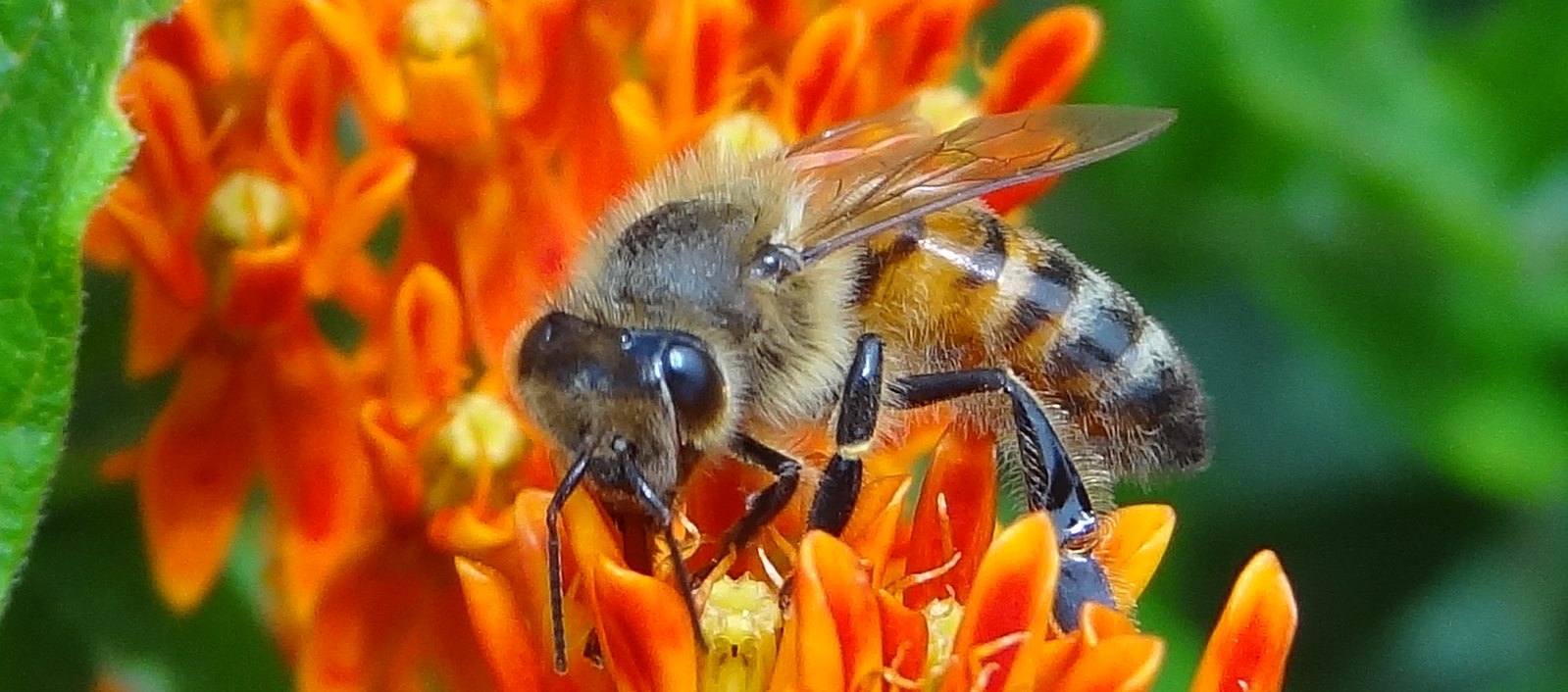
A honeybee pollinating native butterfly weed. Photo: Martin LaBar/Flickr
What is a pollinator?
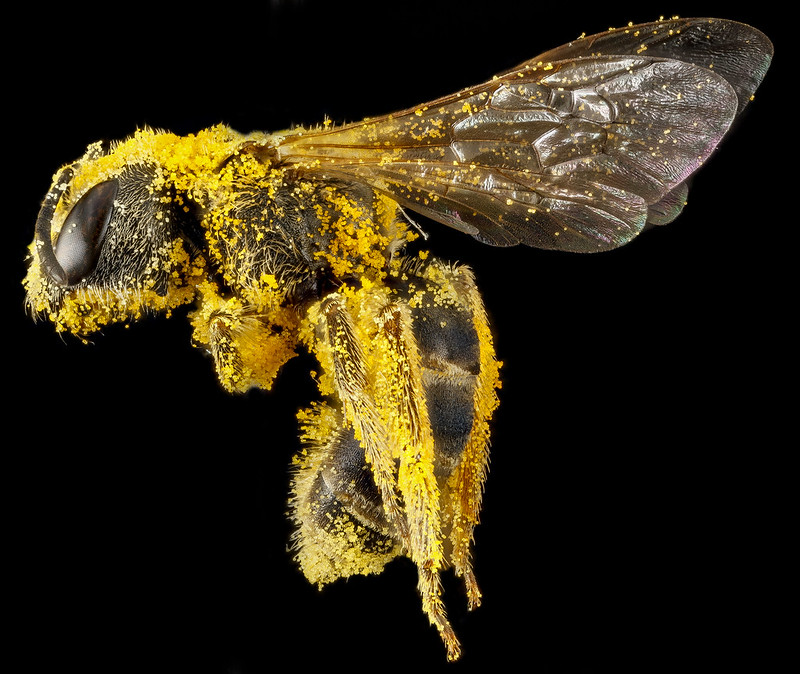
A bee covered in pollen (all the yellow stuff). Photo: USGS Bee Inventory/Flickr
Are bees the only animal that pollinates? Nope! Lots of other insects and animals pollinate. Can you name a few? How about bats, flies, lizards, hummingbirds and butterflies? They all pollinate, but I digress. But to learn more about how these animals pollinate, check out our blog Amazing Pollinators in the Garden.

Blueberries are just one of many foods pollinated by bees
What do bees pollinate?
And they pollinate many of our native plants, which produce the berries and nuts our wildlife eats. Birds like thrushes and cardinals, bears, opossums and almost all wildlife eat pollinated food. Even cows eat alfalfa pollinated by bees. So a world without bees would be a very boring, unhealthy place.
How do bees help baby birds?
No native plants, no caterpillars, no baby birds and that would be very sad indeed!
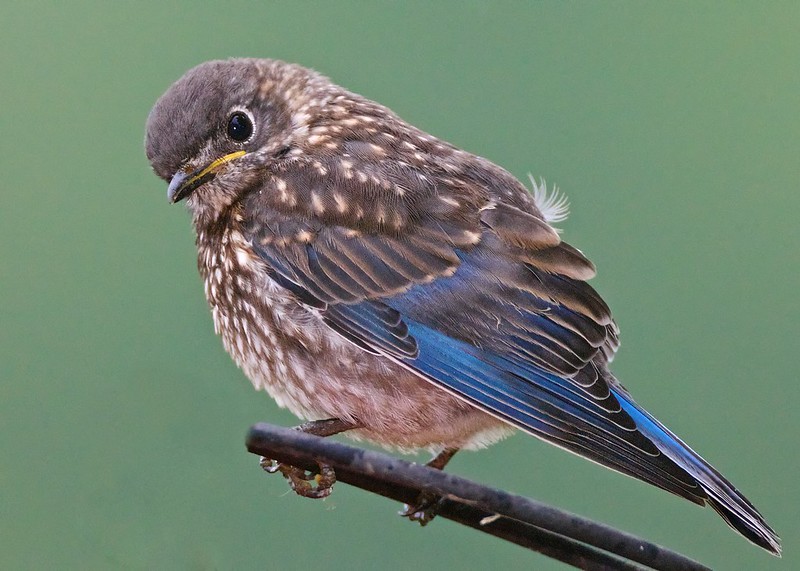
Baby bluebirds only eat caterpillars when they are young. Catapillrs only eat native plants which are pollinated by bees. Photo: Mark Theriot/Flickr

A bee can smell better than a sniffer dog. Photo: Corrie Woods
Bees as pollinators and a million questions!
How do they know which flower has nectar? Ah, they have an amazing sense of smell, even better than sniffer dogs. In some studies, bees have been trained to detect explosives and even diseases in humans. So finding a flower is easy. Wow, this is way cool.
Where do bees go in the winter?

Honeybees hunker in their hive in the winter.
Honey bees hunker in their hive during the colder months with a typical hive having 50,000 bees. In the hive, the entire community of bees work together. Each bee inherently understands the health of the hive is based on communal work, not the individual bee. A great example for all of us humans. We are all connected on this planet and can accomplish a lot more by working together. But you already knew that.
And here’s an interesting statistic. It takes honey bees 55,000 flight hours to make one jar of honey. But the coolest thing about honey bees is their dance. It’s called the waggle, and they dance in a figure eight to tell their co-workers where to find food. So do the waggle! Maybe we can even go viral!
How can you help our bees?
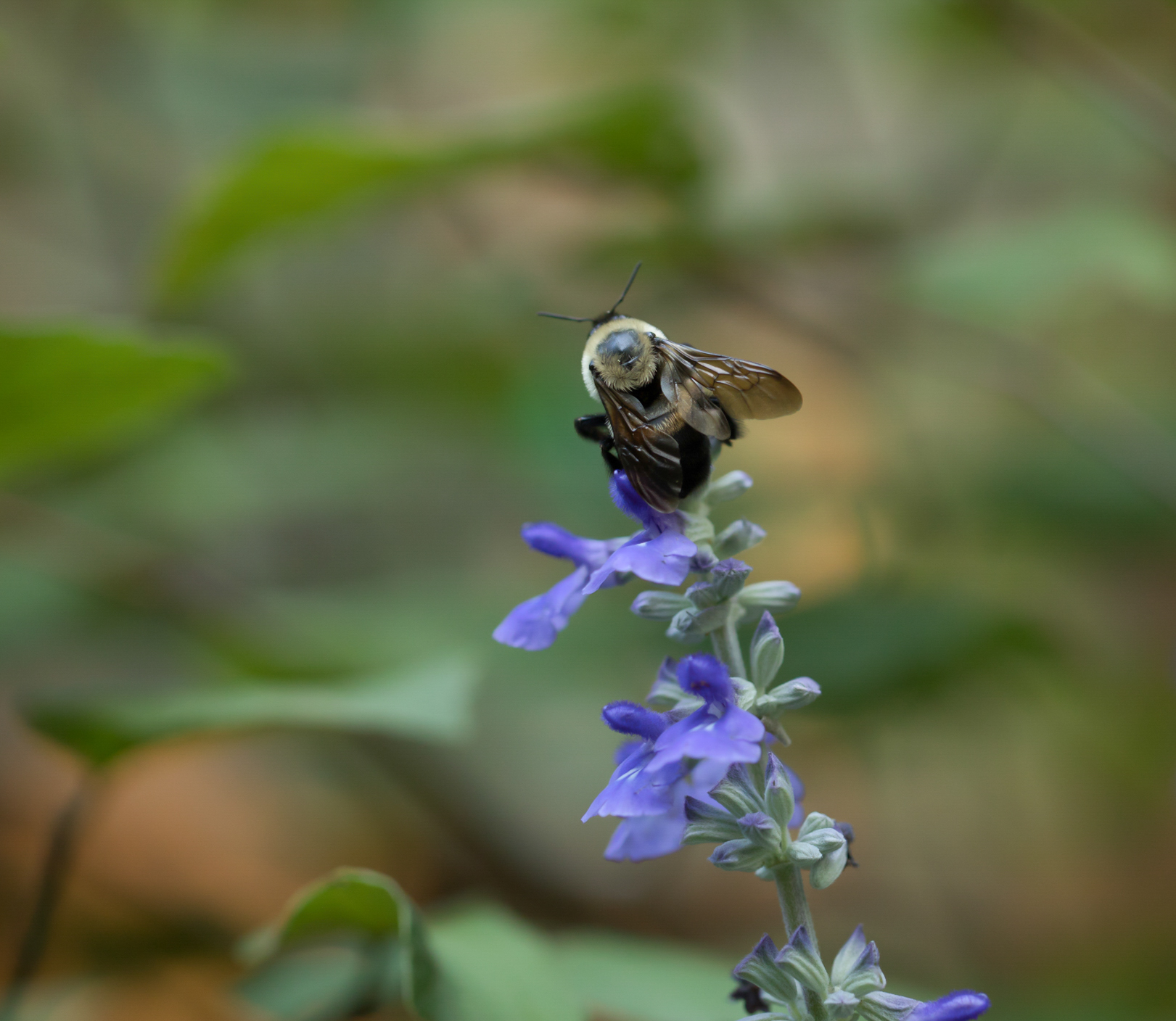
A bumblebee enjoying some nectar while also pollinating a flower. Photo: Corrie Woods
And plant native flowers. If you are interested in native plants, check out the Gardening for Life Project at https://www.gardeningforlifeproject.org/.
Look for plants like milkweed, coneflower, asters, and native grasses. With over 3,900 native plants in NC, you can surely find some you like. And remember, you will be helping the bees and other pollinators, plus all those baby birds! Buzz, buzz.
Learn more
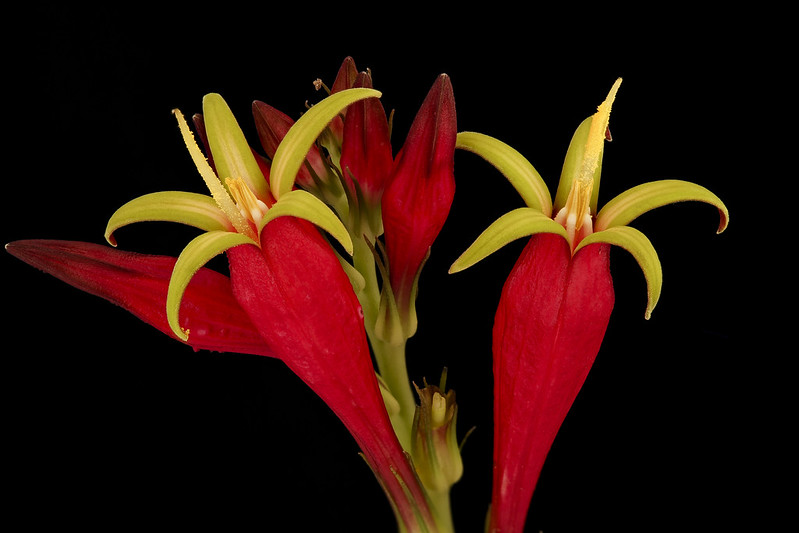
Bees love native plants like this Indian Pink. And it is also a favorite of hummingbirds! Photo: USGS Bee Inventory/Flickr
For great free downloadable photos of native bees, have fun researching The Native Bee Inventory and Monitoring Lab.
